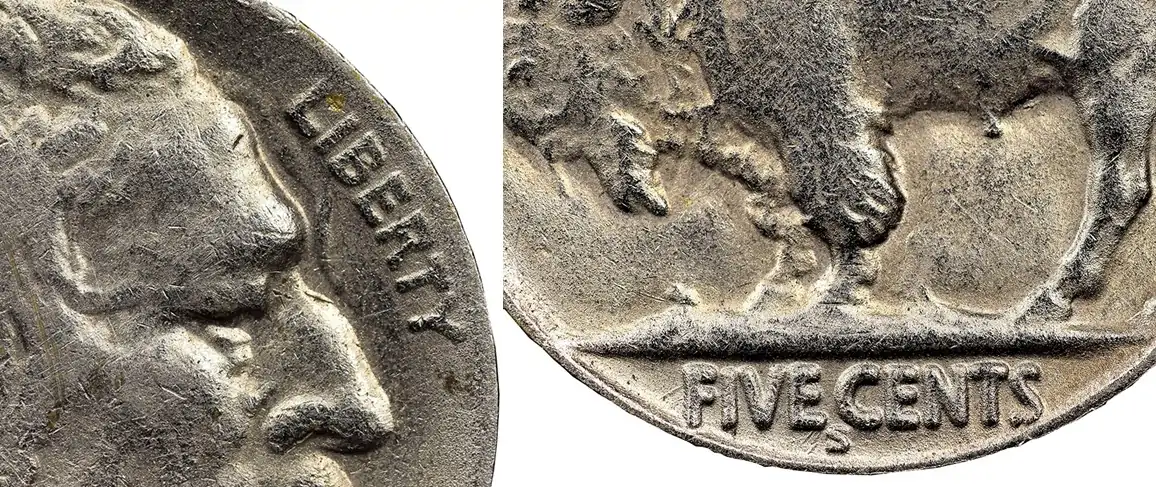NGC -
This coin's surface and weight give way to its spurious nature.Most of the coins in the
Buffalo nickel series (1913-38) are readily available to collectors in circulated condition. The 1919-S is no exception, though like many specimens from early in the series, it does carry a moderate numismatic premium. Price guides suggest that examples can be worth up to several hundred dollars.
Looking for any opportunity to make money, counterfeiters imitate a wide range of coins, from gold rarities that would be the highlight of a major auction to relatively common base-metal coins. Numismatic Guaranty Corporation (NGC) recently received a submission of a purported 1919-S
Buffalo nickel that was, unfortunately for the submitter, not genuine.
 Counterfeit 1919-S Buffalo Nickel
Counterfeit 1919-S Buffalo NickelOverall, this counterfeit shows poor details throughout, especially on the Indian's head and the buffalo, the highest points of the design. On the obverse, the word LIBERTY appears lumpy and blends into the fields, and the rim is nonexistent. On the reverse, the letters in FIVE CENTS appear rounded and ill-defined, and their surfaces are pimpled as well.
A close examination also reveals spikes emerging from the bridge of the Indian's nose and around the FIVE CENTS. Typically, such spikes are toolmarks, evidence that the forger was trying to hide more obvious signs that the coin is fake.
 Close up of the fake 1919-S Buffalo nickel. The coin's legends appear lumpy, and spikes are emerging from the Indian's nose and FIVE CENTS.
Close up of the fake 1919-S Buffalo nickel. The coin's legends appear lumpy, and spikes are emerging from the Indian's nose and FIVE CENTS.Additionally, the counterfeit shows a level of die-clashing that is not often seen on authentic coins. Die-clashing occurs when the obverse and reverse dies strike each other without a planchet between them. In this case, it appears the obverse counterfeit die picked up part of the buffalo's head and back from the reverse (seen above the date) and part of the E PLURIBUS UNIM (seen below the Indian's chin). Die-clashing does happen on genuine mint coins, so it doesn't necessarily indicate a counterfeit. However, the unusual strength of the clash is something a seasoned numismatist might notice.
Buffalo nickels should have the same weight and composition as today's
Jefferson nickels: 5g of 75-percent copper and 25-percent nickel. Although the average collector would not be able to determine that this counterfeit has the incorrect mix of metal (70-percent copper, 27-percent zinc and only 3-percent nickel), a digital scale confirms its spurious nature. Additionally, the fake weighs 5.4g, or 8 percent more than a genuine example.
Read More: Counterfeit Detection Series Check out 1919-S Buffalo Nickels on ebay
Check out 1919-S Buffalo Nickels on ebay.






















